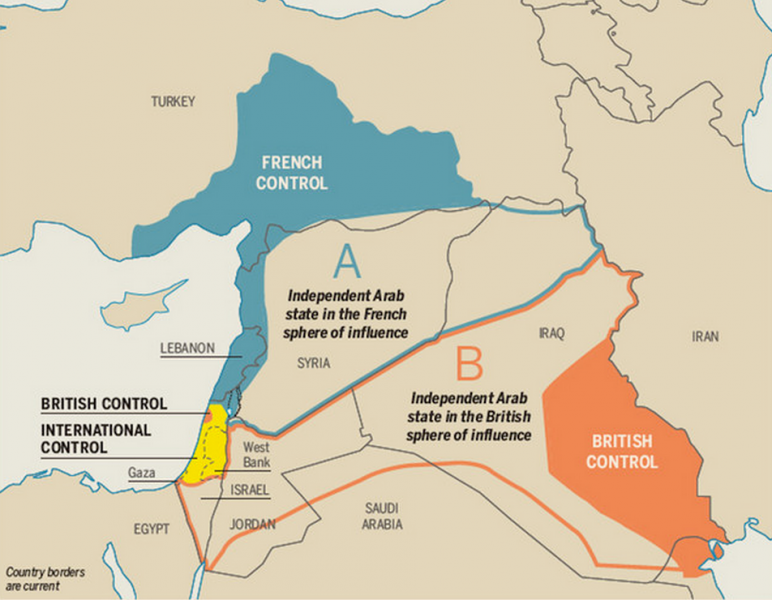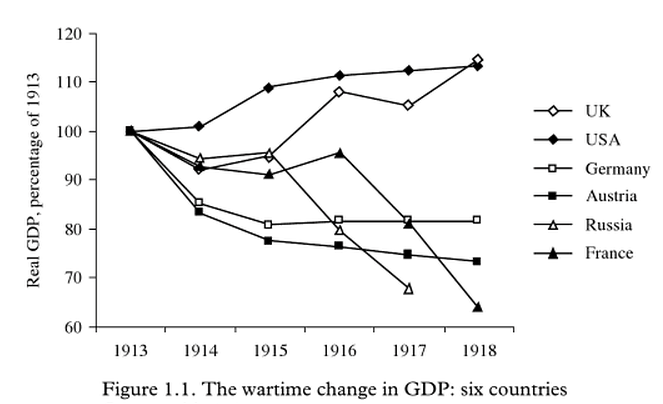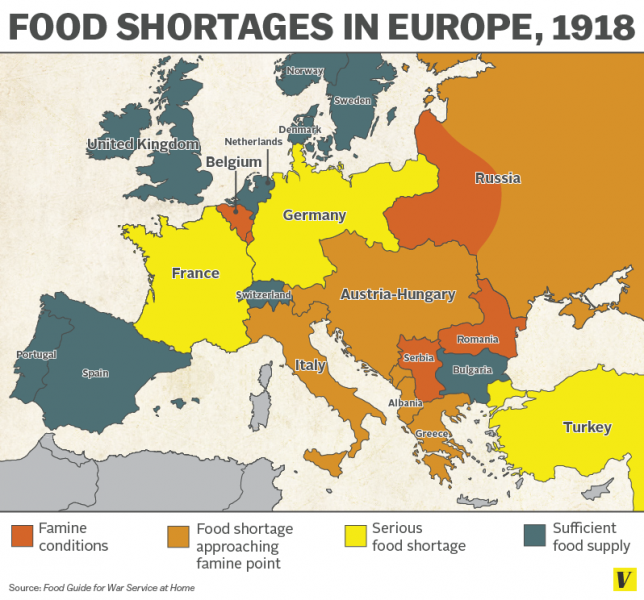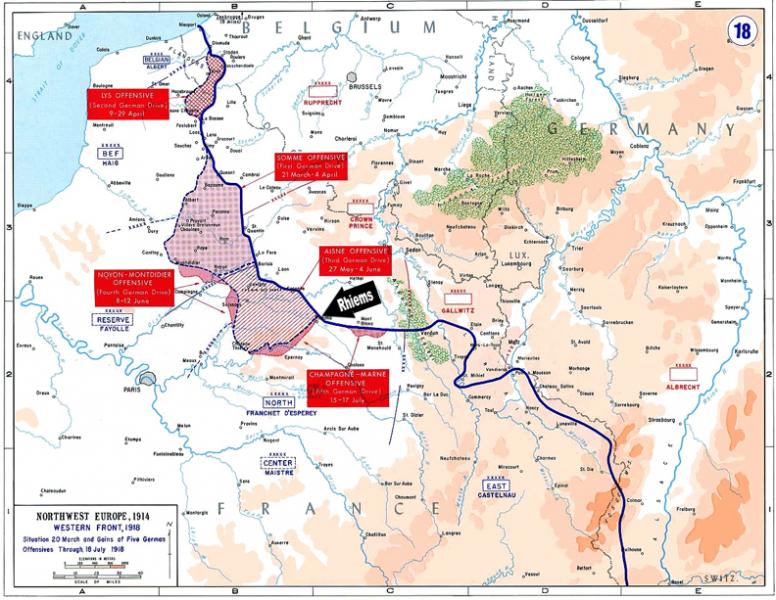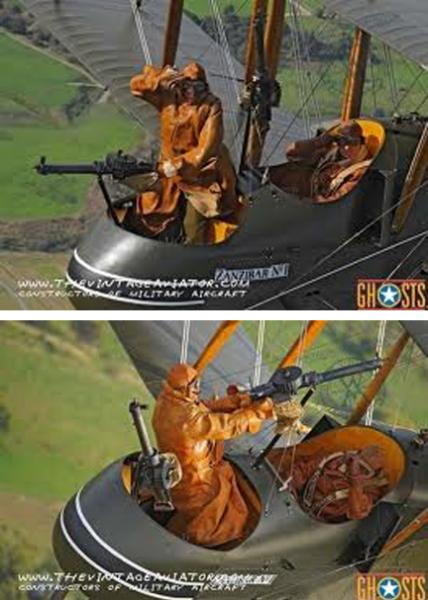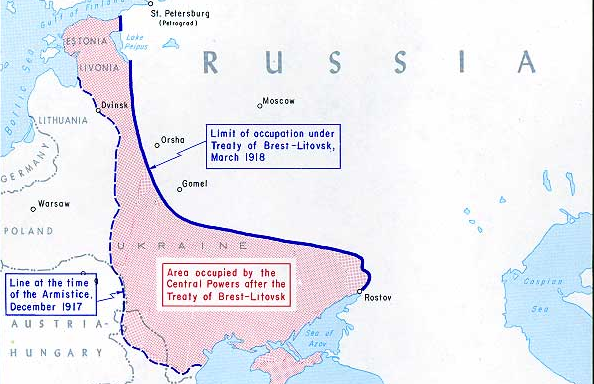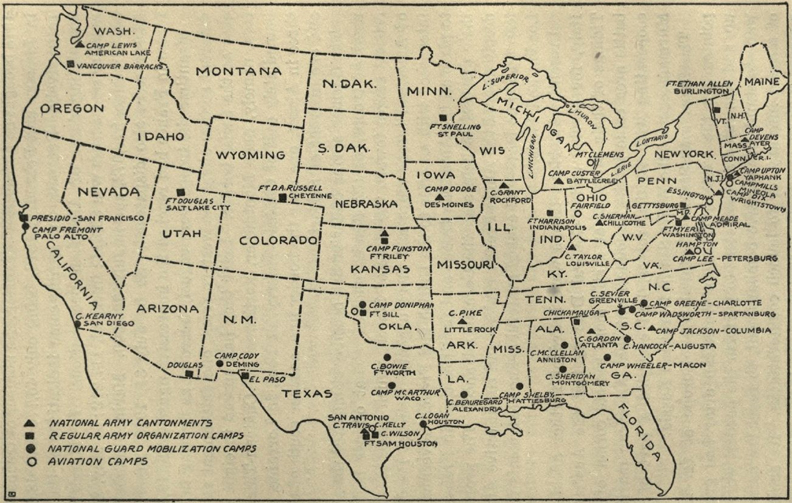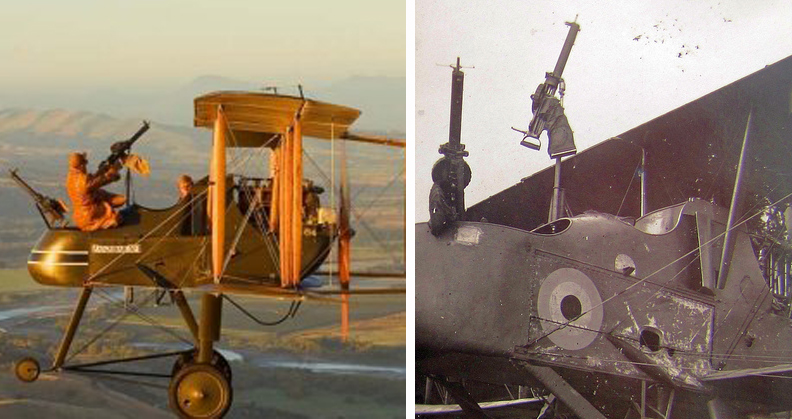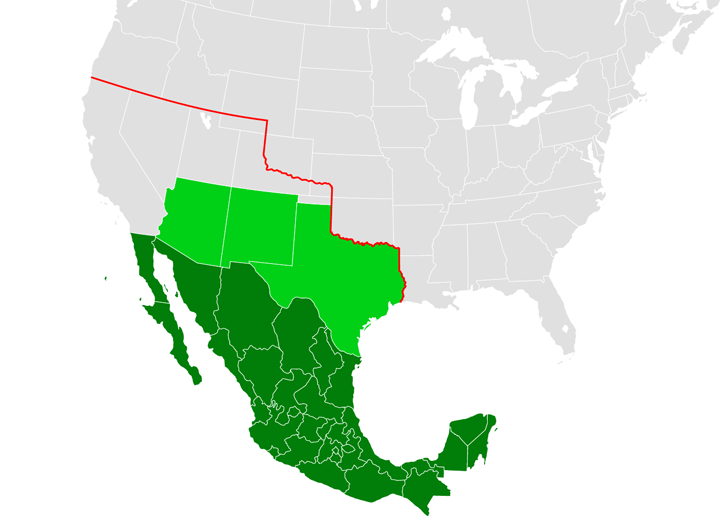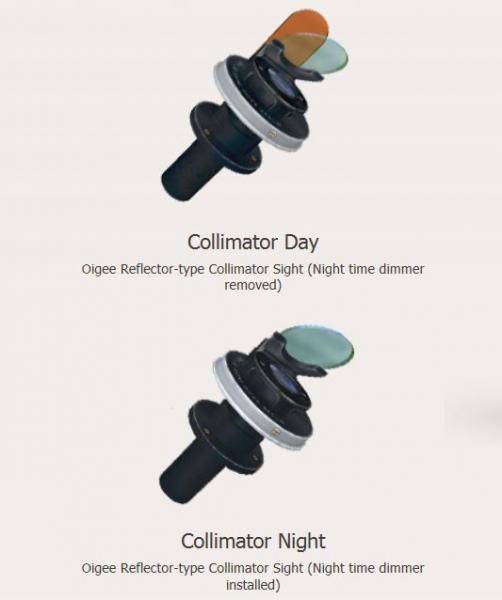-
Posts
2,637 -
Joined
-
Last visited
-
Days Won
1
Content Type
Profiles
Forums
Gallery
Downloads
Store
Everything posted by Hauksbee
-
I have heard 'Ypres' pronounced both ways. Which is correct? ( or should I just stick with the Doughboys and call it 'Wipers'?
-
Sykes-Picot and the breakup of the Ottoman empire World War I also transformed the Middle East. In 1916, French diplomat Francois Georges-Picot and his British counterpart, Sir Mark Sykes, drew up a map dividing the Ottoman Empire's Middle Eastern territory between British and French zones of control. The agreement permitted British and French authorities to divide up their respective territories however they pleased. This led to the creation of a series of Arab countries — Lebanon, Syria, Iraq, Jordan, and so on — whose borders and political institutions only dimly reflected the Arab world's ethno-sectarian makeup. Many scholars believe the Sykes-Picot borders were a major factor in the chaotic state of the Middle East in the decades since then
-
The war devastated European economies The war devastated economies across continental Europe. Not only did each country rack up significant amounts of war debt, they almost all suffered massive losses in gross domestic product over the course of the conflict. France and Russia had each lost a third of their prewar output by the time they left the conflict. The economic pain and massive debt load prompted the Allies to demand huge punitive damages from the losing side after the war. The burden of debt and reparation payments hobbled the Weimar Republic that governed Germany from the end of the war until Adolf Hitler rose to power in the early 1930s. Germany stopped paying reparations in 1931, having paid only a small fraction of the sum the allies had demanded. The Allies also demanded that Austria, Hungary, and Turkey pay reparations, but their economies were so devastated by the war that they never made significant payments
-
A 37mm on the FT-17? I am amazed. As amazed as I was when I first discovered they had mounted one on a SPAD. The Germans didn't mount a 37mm until 1936-37 when the launched the PzkwIII.
-
Changes to Europe after World War I The war officially ended when Germany agreed to lay down its weapons on November 11, 1918. In 1919, the victorious Allies, led by Britain, France, and the United States, met in Paris to decide the fate of the empires they had defeated. Their decisions transformed Europe's borders. The Austro-Hungarian empire was carved up into six new countries. One of these, the awkwardly named Czechoslovakia, would split into the Czech Republic and Slovakia in 1992. The former Serbia was combined with territories annexed from Austria-Hungary to form Yugoslavia, a national home for South Slavic peoples. It, too, disintegrated in the early 1990s, producing several small nations that exist in the Balkans today. The Soviet Union lost some of the Russian Empire's former territory to the new Baltic states and to Poland. Poland, along with France, got chunks of Germany. Czechoslovakia and Yugoslavia are gone, but the other new states persist today, so it's fair to say that World War I set the contours for the modern European state system.
-
A continent on the brink of famine Germany was blessed with excellent military leadership that allowed the nation to hold its own against numerically superior foe. But it had a problem that couldn't be overcome with military tactics alone. Britain and France could draw on the resources of their vast overseas empires, and trade with neutral countries, to get the resources they needed to win the war. Thanks to the British blockade, the Central Powers were cut off from the rest of the world. So conditions in Germany, for soldiers and civilians alike, steadily deteriorated. This map, based on a map from a book published by the United States government in July 1918, shows the food situation in Europe as the war was drawing to a close. While the US government might have been tempted to exaggerate Germany's hardship, this map is basically accurate. By 1918, the Central Powers were facing severe food shortages, and things could have gotten a lot worse if the war had dragged into the winter of 1919. An increasingly desperate German citizenry began pressuring the German government for peace.
-

Map 14: Aircraft [von Richtofen's 80 Victories}
Hauksbee replied to Hauksbee's topic in WOFF UE/PE - General Discussion
A deal! How about I pilot and you shoot? -

Map 14: Aircraft [von Richtofen's 80 Victories}
Hauksbee replied to Hauksbee's topic in WOFF UE/PE - General Discussion
Jim, I bow to your relentless logic, but it wouldn't make me feel one bit better if I were to be plunked down in the gunners seat tomorrow. Your case gets even stronger when I reflect on some of the crazy things I did in my twenties. -
My Gad! I had always assumed it was (at the very least) a third-class Pullman-style coach. And while I knew that 'sealed' meant nobody got on or off, padlocking the door seems really harsh. It's like slapping Lenin in the face, then dispatching him to save Germany's butt.
-
Spring 1918: Germany's last offensive In the spring of 1918, the German Empire made a final, audacious attempt to break the stalemate on the Western Front. German troops had spent the winter learning a new style of trench warfare inspired by the successful tactics of the Russians under Alexei Brusilov two years before. The artillery barrages that preceded attacks became shorter and more precisely timed to preserve the advantage of surprise. Instead of advancing on enemy positions in mass waves, troops were instructed to cross the front in small groups and improvise once they reached enemy trenches. Initially, the offensive was a stunning success, punching a hole in the Allied line and allowing German troops to pour through it. But for the offensive to pay strategic dividends, the Germans needed to widen the hole in the enemy lines. Otherwise, the Allies could later repair the breach and cut the advancing enemy troops off from supplies and reinforcement. The key to the battle was French fortifications near the city of Reims, which is that awkward corner on the left-hand side of the German gains. If Reims had fallen, German troops might have been able to widen the breach in the French line and march down to Paris. But Reims didn't fall, and so German troops became more vulnerable the deeper they marched into French territory. After repeated attempts to take Reims failed, the Germans were forced to abandon the territory they had taken to avoid being cut off.
-
Quite right. It was Germany to-Sweden-to-Russia. And it seems that the "sealed train" was only one car long. I had always wondered (when I thought of it at all) how it was done. That it must have been a great trick of espionage to smuggle Lenin eastward from Germany into Russia. And a long journey to boot. Like most magician's tricks, when you see how it was done, it's obvious.
-

Map 14: Aircraft [von Richtofen's 80 Victories}
Hauksbee replied to Hauksbee's topic in WOFF UE/PE - General Discussion
Here's Makana's pictures from the "Ghosts" calendar and he certainly does looked unbelted in any way. That may have been standard for the times, but had I been assigned to a F.E.2 unit, I bloody well would have jury-rigged some sort of belt or harness. And If I got any flack from the C.O., he could damn well court martial me. Beats falling 10,000+ ft. any day. -

Map 14: Aircraft [von Richtofen's 80 Victories}
Hauksbee replied to Hauksbee's topic in WOFF UE/PE - General Discussion
It is gratifying to know that Germans agonized over the same question. Thanks, Gepard for the options. -
Russia capitulates in the Treaty of Brest-Litovsk Following the collapse of the Czarist regime in the February 1917 Revolution, a provisional government led by Aleksander Kerensky came to power in Russia. Kerensky's government was unable to impose discipline on the unraveling Russian military or conduct effective military operations. German authorities allowed Vladimir Lenin, then in exile in Switzerland, to travel via special train through German-occupied territory into Russia where he and his Bolshevik allies took political leadership of the anti-war cause. After seizing power in the October Revolution, the new Bolshevik government was forced to negotiate peace with the Germans from a position of extreme weakness. At the Treaty of Brest-Litovsk in March 1918, Russia abandoned its previous rule over Finland, most of Poland, Latvia, Lithuania, Estonia, Ukraine, and Belorussia. German plans called for this territory to be reorganized as a series of German-dominated satellite states but the failure of the Spring Offensive in the West and the subsequent German surrender rendered the new order in the East irrelevant.
-

Map 14: Aircraft [von Richtofen's 80 Victories}
Hauksbee replied to Hauksbee's topic in WOFF UE/PE - General Discussion
I think "liable to be thrown out of his cockpit" is being used in the sense of "in danger of...". As you say, no known cases of this happening have ever been reported...tho' I don't know why not. Small miracles do happen, I guess. -

Cities Below The Trenches...
Hauksbee replied to Hauksbee's topic in WOFF UE/PE - General Discussion
On the Allied side of the lines? -
The United States mobilizes for war America officially joined the war in April 1917, but it would take a year before American troops started arriving in a large enough volume to make a significant difference in the outcome of the war. The United States had never mobilized so many troops to fight in a war so far away. Congress, anticipating a possible war, had authorized a troop buildup in 1916; at that time the US had only had 130,000 soldiers. G.J. Meyer writes that "thirty-two training camps, each occupying eight to twelve thousand acres and containing fifteen hundred buildings capable of accommodating forty thousand men, were constructed in sixty days" after the declaration of war. Despite these efforts, fewer than 200,000 troops had arrived on French soil by the end of 1917. But those numbers grew rapidly in 1918. By May, 200,00 fresh troops per month were flooding onto the continent.
-

Map 14: Aircraft [von Richtofen's 80 Victories}
Hauksbee replied to Hauksbee's topic in WOFF UE/PE - General Discussion
My worst fears realized: No seat belt or tether when standing. Jinking and turning come with the territory when you're in a dogfight, so if there's no reports of gunners falling out, I can't believe they tried the standing position very often. I poked around on the web looking for a top view to see by how much the pilot's MG was offset to the gunner's position. I'm sure, in actual combat, they were careful not to shoot their own, but it must have been un-nerving when that Lewis went off behind your shoulder. (Edit: Thanks for the new pic., Jim. That clears things up a bit.) I couldn't find a visual, but here's some snippets from the Wiki article that addresses the gunner/observer dilemma and how F.E.2's covered each others vulnerable tails. Early in the F.E.2b's career, a second Lewis gun was added in front of the pilot's cockpit, on a high telescopic mounting so that the pilot could fire forward, over his observer's head. In practice, this gun was appropriated by the observers, especially when they discovered that by climbing onto the rim of their cockpits they could fire backwards over the top wing – to some extent overcoming the notorious deficiency of pusher types in rear defense, although even this failed to cover a very large blind spot under the tail. The observer's perch was a precarious one, especially when firing the "rear gun", and he was liable to be thrown out of his cockpit, although his view was excellent in all directions except directly to the rear. The F.E.2 could also carry an external bomb load, and was routinely fitted with a standard air-photography camera. Wiki caption to Jim' s photo: An F.E.2d observer demonstrating the use of the rear-firing Lewis gun, which required him to stand on the rim of his cockpit. Note the camera, and the (non-standard) extra Lewis gun for the pilot. The arrangement was described by Frederick Libby, an American ace who served as an F.E.2b observer in 1916: "When you stood up to shoot, all of you from the knees up was exposed to the elements. There was no belt to hold you. Only your grip on the gun and the sides of the nacelle stood between you and eternity. Toward the front of the nacelle was a hollow steel rod with a swivel mount to which the gun was anchored. This gun covered a huge field of fire forward. Between the observer and the pilot a second gun was mounted, for firing over the F.E.2b's upper wing to protect the aircraft from rear attack ... Adjusting and shooting this gun required that you stand right up out of the nacelle with your feet on the nacelle coaming. You had nothing to worry about except being blown out of the aircraft by the blast of air or tossed out bodily if the pilot made a wrong move. There were no parachutes and no belts. No wonder they needed observers." In combat with single-seater fighters, the pilots of F.E.2b and F.E.2d fighters would form what was probably the first use of what later became known as a Lufbery circle (defensive circle). In the case of the F.E.2, the intention was that the gunner of each aircraft could cover the blind spot under the tail of his neighbour and several gunners could fire on any enemy attacking the group. On occasion formations of F.E.2s fought their way back from far over the lines, while under heavy attack from German fighters, using this tactic. Although outclassed as a day fighter, the F.E.2 proved very suitable for use at night and was used as a night fighter in home defense squadrons on anti-Zeppelin patrols and as a light tactical night bomber. It was first used as a night bomber in November 1916, with the first specialist F.E.2b night bomber squadrons being formed in February 1917. F.E.2bs were used as night bombers in eight bomber squadrons until the end of the First World War, with up to 860 being converted to, or built as bombers. Service as a night fighter was less successful, owing to the type's poor climb and ceiling. -

Map 14: Aircraft [von Richtofen's 80 Victories}
Hauksbee replied to Hauksbee's topic in WOFF UE/PE - General Discussion
Looking at the text again, I see that they have him shot down by an F.E.2d. Surely that should be F.E.2b (?) And you say the both the pilot & gunner were firing? Could the pilot fire the forward facing gun while the gunner stood? How did they work that out? And something I've wondered about for some time: what kind of rig did the gunner have to keep him from being thrown from the plane while he's standing? Most pictures of the Gun Bus show only one machine gun. Could the gunner move a single gun back and forth between two firing positions? -
True. That's what I'd do.
-
This really put the fat in the fire. Germany's biggest blunder of WWI. If this is of any interest, don't miss Barbara Tuchman's account "The Zimmerman Telegram". The Zimmermann telegram: Germany proposes a Mexican war against the US Anticipating that the German submarine campaign would draw the United States into the war, Germany's foreign secretary, Arthur Zimmermann, sent a coded telegram to the German ambassador in Mexico. In the event the United States declared war on Germany, the ambassador was instructed to approach the Mexican government with a proposed alliance. Germany would help fund a military campaign to allow Mexico to retake some of the territory lost in the Mexican-American war seven decades earlier. This map shows Zimmermann's proposal: Texas, Arizona, and New Mexico would be annexed into Mexico (the red line shows Mexican territory before 1845). Unfortunately for Zimmermann, the Brits were not only tapping undersea cables between Europe and the United States, but they had also broken Germany's ciphers. So the Brits deciphered Zimmerman's message and passed a copy along to the Americans. The release of Zimmermann's telegram inflamed American public opinion and helped to build momentum for a US declaration of war, which occurred on April 6, 1917. Mexico, meanwhile, realized that it would have no hope of defeating the United States and rejected Germany's proposal.
-
My impression was (as the screens got redder and darker) was that he (the pilot) was probably bleeding to death.
-
http://riseofflight.com/en/store/fieldmods/Albatros_DVa ROF refers to this as a Collimater Gunsight. Check out the link. When I first saw it I (not looking TOO closely) read it as an Aldis-type gunsight.
-
Germany resumes submarine warfare against American ships As 1917 began, Germany was growing increasingly desperate. Britain's blockade of German ports was making it harder and harder for Germany to feed its own people. The German war plan had depended on a quick victory over France, but now the Western Front seemed to be in a perpetual stalemate. So the German high command decided to resume submarine attacks on neutral ships in British waters. Their goal was to so devastate neutral shippers that they would become unwilling to trade with the Allies. Germany hoped that would inflict on Britain the same pain Germany itself had been suffering and force the Allies to come to terms. The Germans knew that this was a risky gamble because it could draw the United States into the war, but they hoped to bring the Allies to their knees before US involvement became significant. This proved to be a fatal miscalculation. The submarine campaign never came close to halting American shipping to the Allies, while the flood of American troops in the final months of the war ensured Germany's defeat.
-

Cities Below The Trenches...
Hauksbee replied to Hauksbee's topic in WOFF UE/PE - General Discussion
Are these people "artists" who bring the work down there to be shown, or are they working on the walls themselves? "Graffiti artists?


